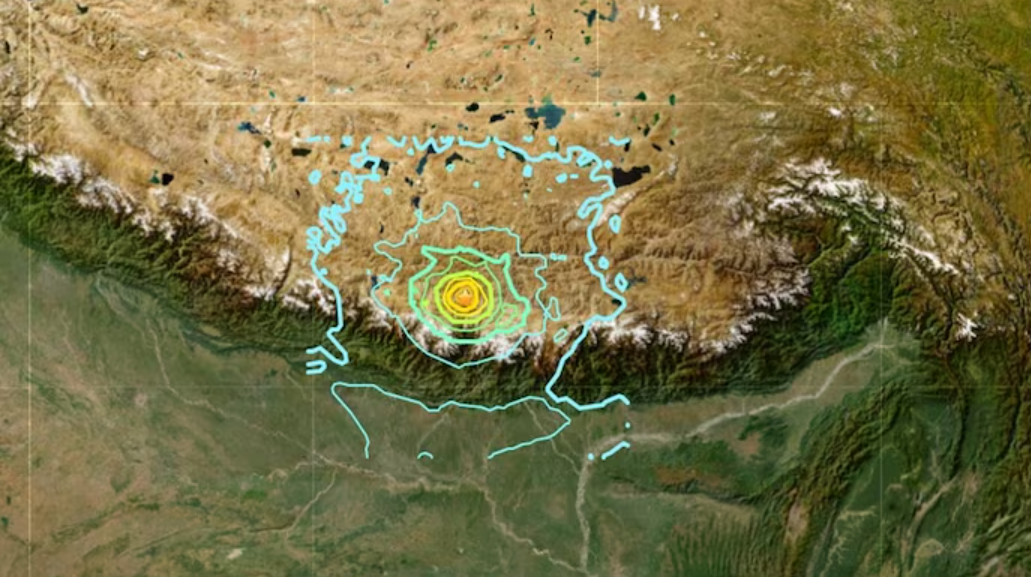Tibet Earthquake 2025: How the Lhasa Block’s Tectonic Activity Triggered 7.1 Magnitude Tremors
Tibet Earthquake: How the Lhasa Block’s Tectonic Activity Triggered 7.1 Magnitude Tremors
Tibet: On January 7, 2025, a catastrophic earthquake of magnitude 7.1 (according to the U.S. Geological Survey) struck Tibet, devastating several regions close to the iconic Mount Everest. The tremors were felt as far away as Nepal, Bhutan, and northern India, demonstrating the intense power of this seismic event. The quake, with a depth of only 10 kilometers, resulted in significant destruction, with the epicenter located in Tingri County, around 80 kilometers to the north of Everest. The shallowness of the tremor amplified its impact, making the earthquake more destructive across neighboring countries.
At least 90 lives were tragically lost, and over 130 people sustained injuries as buildings collapsed, particularly in towns near Shigatse, Tibet’s second-largest city. In response, around 1,500 emergency workers have been deployed to assist in rescue operations and search for survivors trapped under debris.
Tibet Earthquake: The Geology Behind the Tremors
Tibet is one of the most tectonically active regions on Earth, primarily due to the ongoing collision between the Indian and Eurasian tectonic plates. This collision, which has continued for millions of years, formed the mighty Himalayas and continues to shape the geological landscape of the region. The area near Tibet, especially around Tingri, is known for frequent seismic activity, and the earthquake on January 7, 2025, was no exception.
The quake was linked to the ongoing stress within the Lhasa Block, a geological region that plays a crucial role in the region’s tectonic processes. The Lhasa Block is situated in southern Tibet and forms a critical boundary between the Qiangtang and Tethyan Himalayan terranes. Historically, this block originated from ancient landmasses, including parts of Australia and East Africa. Over time, it collided with the Eurasian Plate during the Cretaceous period and has since been subjected to immense tectonic forces.
These forces arise from the north-south compression caused by the Indian-Eurasian plate collision. This compression leads to the shortening and uplifting of the Earth’s crust. At the same time, lateral (west-east) stress causes crustal movements along regional fault lines. These processes not only contribute to the formation of the Himalayan mountain range but also significantly influence the region’s seismic activity, making it prone to major earthquakes, such as the one witnessed on January 7.
The Aftermath and Regional Impact
In neighboring Nepal, the earthquake’s tremors were so intense that residents in Kathmandu, the capital, evacuated their homes. Despite the distance of approximately 400 kilometers from the epicenter, the shaking was strong enough to raise concerns about potential damage. While initial reports from Nepal have not indicated any casualties, the government is on high alert, mobilizing resources to assess the situation.
In Tibet, the damage has been severe. Several buildings in and around the Shigatse area have collapsed, causing widespread panic among the local population. Rescue teams are working around the clock to save people trapped under the rubble, but with aftershocks continuing to shake the region, operations remain risky and unpredictable.
The Lhasa Block’s Seismic Role
The Lhasa block, often referred to as the Lhasa terrane, has long been an area of geological interest due to its unique tectonic setting. The seismic event highlights the role of this block in the ongoing tectonic interactions between the Indian and Eurasian plates. As pressure builds up between the colliding plates, it’s released in the form of earthquakes. The relatively shallow depth of this earthquake—just 10 kilometers beneath the Earth’s surface—made it particularly destructive. Shallow earthquakes tend to have stronger surface impacts, causing more significant shaking and damage.
This region’s seismic history reveals a pattern of recurring large-scale earthquakes, which continue to affect the livelihoods of local communities. The Lhasa block’s north-south compression and lateral stress create a volatile environment, making this region one of the most seismically active zones in the world.
Tibet Earthquake: Future Risk and Global Implications
Experts have long warned that the tectonic stress in Tibet could trigger further large-scale earthquakes. The region’s seismicity is not isolated to Tibet itself; neighboring countries such as Nepal, Bhutan, and parts of northern India are also vulnerable to these tremors. For example, the 2015 earthquake in Nepal highlighted how interconnected the seismic risks are in this region. Similarly, parts of northern India have felt significant aftershocks, heightening concerns about future events.
As the region continues to face tectonic pressures, it is likely that more powerful earthquakes will occur in the coming years. The situation calls for enhanced monitoring, better disaster preparedness, and stronger international cooperation to mitigate the damage caused by such events.
Responding to the Crisis
In response to the earthquake, Chinese President Xi Jinping has called for immediate action to minimize casualties and ensure proper resettlement of displaced individuals. Efforts are focused on delivering relief supplies, providing medical assistance to the injured, and stabilizing damaged infrastructure. As the search for survivors continues, authorities remain on high alert for possible aftershocks that could further exacerbate the situation.
The ongoing challenge will be to rebuild the affected areas, providing adequate housing, medical care, and mental health support for the victims. As this disaster unfolds, the global community’s attention remains on Tibet, with hopes for swift recovery and stronger seismic safety measures in the future.
This devastating earthquake not only underscores the geological forces shaping the region but also highlights the urgent need for preparedness in one of the world’s most earthquake-prone areas.
Also Read:-
WWE Raw Results, Recap, and Grades – Netflix Era Debut 2025
Mumbai’s Torres Jewellers Scam 2025: How a Vegetable Vendor Uncovered a ₹13.5 Crore Fraud in Dadar
